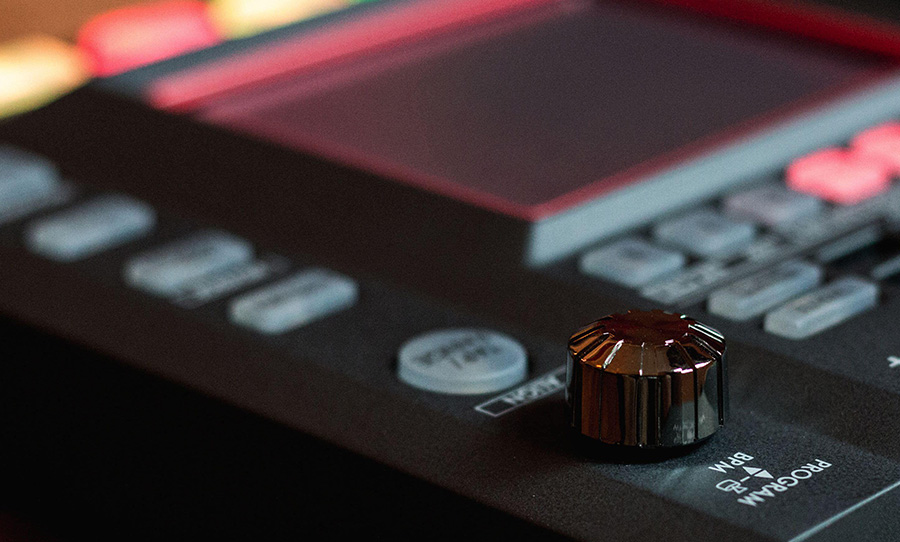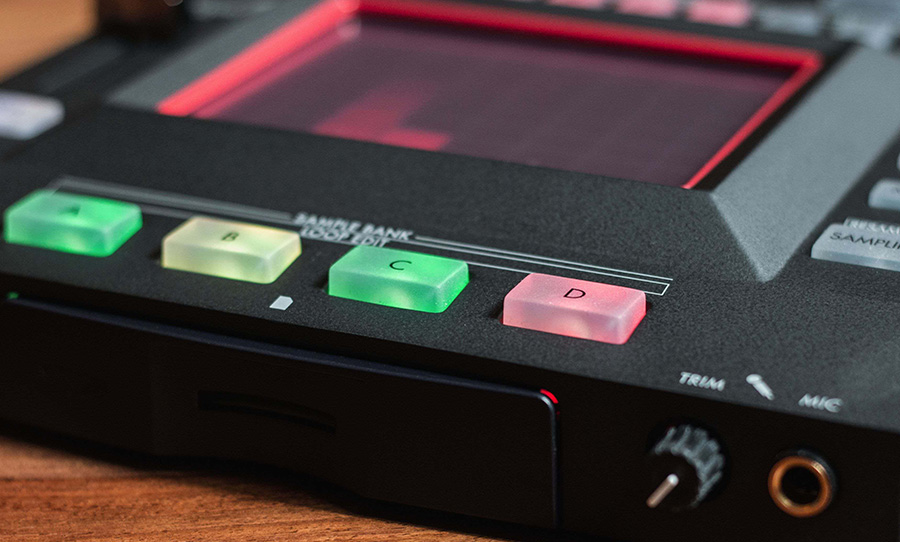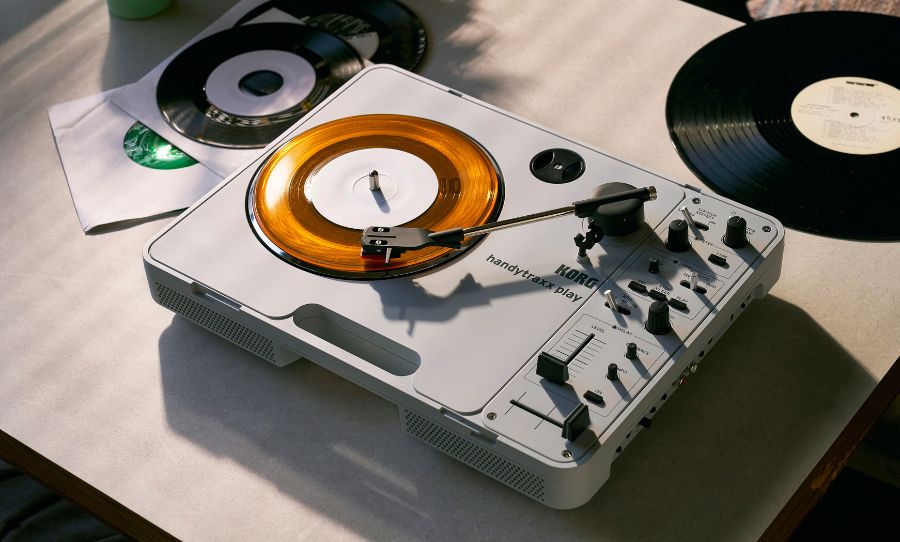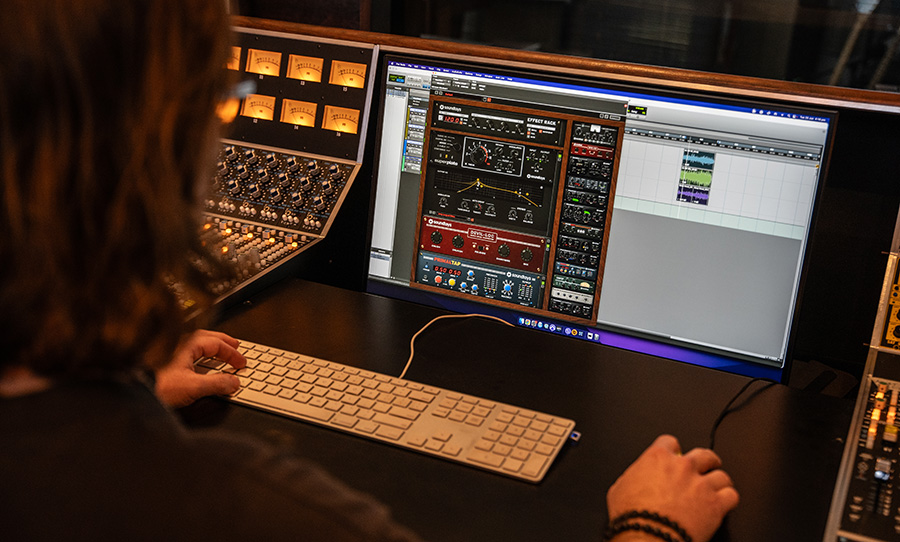Korg has long been revered for its innovative contributions to music technology. In 1999 they first introduced the Kaoss Pad, a powerful effects processor where parameters are controlled by gliding a finger over the top of a touchpad. Their KP3+ model is a particularly inspiring beast, with 150 in-built effects that allow to users conjure a complex array of sounds that you can’t really get with any other controller or system (well, certainly not as easily).
Effects systems like these, in their various incarnations, have been involved in recording and performing processes for some time now. The rise of the bedroom producer, and the subsequent quests these artists embark on to replicate their music on a live stage, has led to a need for performers to utilise more complex effects systems; not just simple guitar pedals but increasingly innovative outboard process ng. This raises a few questions – what should the contemporary boundaries for ‘instruments’ be? And what is the value of effect systems like the KP3+ in recording and performance?
We pull apart the features and capabilities of the Korg Kaoss Pad KP3+ as an examination of effect systems being used as instruments.
To answer these questions, we must ask ourselves what we already know of the term ‘musical instrument.’ It is very likely, depending on your experience with music, that the first object that comes to mind is a guitar, or drum kit, or some other acoustic instrument. Put simply, a musical instrument is an object created or adapted to make musical sounds.
Of course, under this classification, a rice container or a piece of vinyl could be classed as an instrument, but should the label of an ‘instrument’ limited only to the acoustic world? Is a piece of gear like the KP3+ an instrument or simply a conduit for instruments? Let’s explore this question by pulling apart the features and capabilities of the Kaoss Pad.
Synth Programs
The KP3+ can act like a normal synth, with inbuilt sounds and ambience packages, further manipulated by the processing power of the unit. While there are no keys, the KP3+ has the ability to make original sounds from preloaded samples, which can both bolster a recording and cut down your gear in live performance once you get used to the controls.
Simulating Other Instruments
While the Korg KP3+ does not ‘create’ sound from scratch, its manipulation of input signals can be likened to a flute using wind to produce sound. Its 150 effects can simulate sonic characteristics of a turntable with the Vinyl Break feature, a backbeat in the Ducking Compressor module, a voice with the Vocoder, and heaps more, provided you have a suitable sound source. However, the Kaoss Pad’s use as a sampler is limited only to what sounds you have available as far as imitation goes.
Removing The Source
The KP3+ also has a feature where the user may mute the original sound source, leaving only the affected signal in the output mix. This feature attributes the KP3+ its own unique sonic palette: as a performer or producer, these entirely wet slices, reverb, flanged and filtered effects are essentially wholly original sounds, and it is here that the distinction between the instrument being the signal source or the Kaoss Pad becomes even more blurred.
Physicality in the Digital World
Brian Eno describes the Kaoss Pad as “a way of taking sounds into the domain of muscular control … you can really start playing with sound itself, with its physical character. It’s immediately obvious what you do, and it takes you into a completely different place, because when working with computers you normally don’t use your muscles in that way. You’re focused on your head, and the three million years of evolution that resulted in incredible muscular skill doesn’t get a look in.” Eno’s point illustrates music as being a physical act which, once lost in the digital world, is retrieved through the KP3+.
Live Performances
Using the KP3+ you can splice vocals, employ timed-based effects, BPM alterations, looping, sampling and pitch modification and so much more in real-time. Vocals and instruments can take on forms unrecognisable or even unplayable in their genuine form, blurring the lines of executable sounds in a live context.
A myriad of popular performers use the Kaoss Pad live to augment their live shows: Phantagram, Enter Shikari, Animal Collective, Brian Eno, and Radiohead are just a few of the acts who use the Kaoss Pad for both the practicalities of translating studio recordings to live performance and for live experimentation.
Here are a few examples:
Australian indie-electronic artist Emma Louise put the KP3+ through its paces in her performance for triple J’s Like a Version, using it as a vocal processor to create a dreamy, stuttering delay effect.
Muse‘s Matt Bellamy’s use of the KP3+ is a great example it being used to augment an instrument, and in turn becoming an instrument itself. Bellamy has the touch pad of a KP3+ built in to his guitar, which he uses to create scratchy, turntable-esque sounds using only his finger and his guitar’s input signal (skip to 2:55 to hear it).
These are just a few examples of the Korg Kaoss Pad’s potential as an endlessly inspiring musical tool – one that begs you to bend the confines of genre and musical classification and that can most certainly be called an instrument in its own right.
Photos: DJ Worx


